Ireland is world renowned for many things, including lush green meadows, lively traditional music, and the ever-popular, life-affirming ‘black stuff’ — better known as Guinness stout. In addition to the endless charm and unrivaled beauty, the Emerald Isle also features an enormous maritime graveyard along its scenic shores.
According to the Shipwreck Inventory of Ireland, approximately 18,000 sunken vessels reside in Irish waters. Here’s a small sampling of some of these soggy cemeteries.
10. MV Auckland Star

When recalling his biggest fears during the Second World War, Winston Churchill confessed in his memoirs: “The only thing that ever really frightened me during the war was the U-boat peril.” That said, ‘Silent Otto’ undoubtedly caused the British Prime Minister many a sleepless night.
Otto Kretschmer, whose moniker owed as much to his stealth tactics as his reserved demeanor, loudly made history as Germany’s most successful U-Boat commander. The highly decorated officer sunk 47 ships (274,418 tons), including the British cargo ship, MV Auckland Star.
On July 7th, 1940, Kretschmer’s U-99 fired three torpedoes into the transport vessel 80 miles northwest of Valentia Island, County Kerry. The Auckland Star was returning to Liverpool from Australia with 10,700 tons of general merchandise, including lead, steel, hides, wheat, and refrigerated meat. All of its 74 crew members managed to escape safely in four lifeboats.
The London Evening Standard later provided these nuggets about the incident: “…and in one of those boats were the three pets of the crew…”
“Jacko the monkey held by the mate at the tiller, Peter the Chief Steward’s canary” and “Cobber” the ship’s cat. “Peter” was saved in a cigarette tin, “caged” when he reached the lifeboat. At night a life-jacket was wrapped around his cage to keep him warm.
“His singing kept our spirits up’ said on (sic) of the crew. And after three days at sea the crew and pets all reached port safely.”
9. Edmond
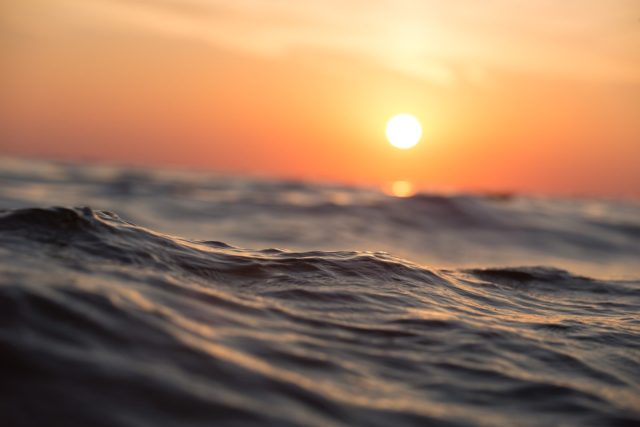
The mid 19th century saw thousands of Irish families emigrate to North America, hoping to escape the starvation and disease exacerbated by a widespread failure of the potato crop. This exodus led to so-called “coffin ships” departing Ireland in boats plagued by overcrowding and unsanitary conditions — not to mention the tempestuous fury of the sea. For the unfortunate passengers of the Edmond, things would only get worse.
On November 18, 1850, the 399-ton barque loaded with 195 passengers sailed down the Shannon estuary en route to New York City. The ship had sailed only 30 miles before suddenly encountering a violent storm that damaged two of its masts.
Helpless against the furious wind, the Edmond drifted back towards the jagged rocks surrounding Kilkee Bay, resulting in the deaths of 98 people — mostly women and children.
8. SS Laurentic
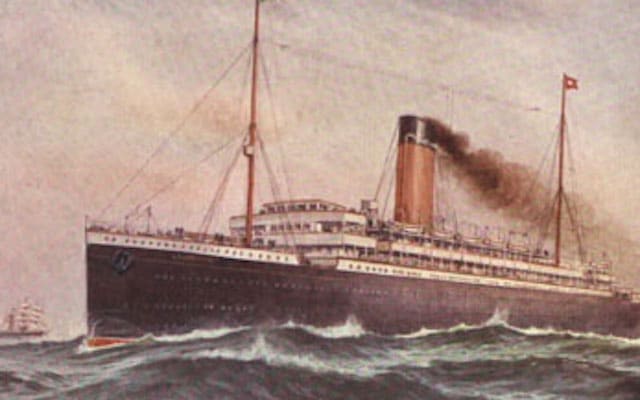
Situated on the rugged northern tip of Ireland, a glacial fjord cuts through the western side of the Inishowen Peninsula and the Fanad Peninsula in County Donegal. There, on the evening of January 25, 1917, an armed merchant cruiser loaded with 475 passengers and 43 tons of gold went down after hitting two German mines.
Launched in 1908, the Laurentic had operated as a luxury ocean liner prior to its conversion at the outset of WWI. It was part of the prestigious White Star Line fleet and built by Harland and Wolff in Belfast, the same as the Titanic. The wartime vessel had been en route to purchase desperately needed war munitions from Canada and the US. But after triggering the deadly explosives, the Laurentic went down in less than an hour.
While attempting to abandon ship, 354 died of hypothermia in wintry blizzard conditions. Those who survived were taken to Derry, where they received 10 shillings and a pack of cigarettes. Between 1917 and 1924, salvage teams recovered most of the gold ingots worth £5 million pounds (approximately £350 million today). However, at least 20 bars have never been found.
7. Port Yarrock
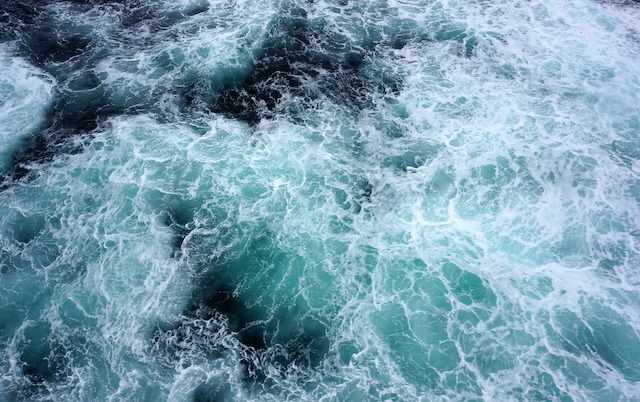
Among the many perils facing sailors in the 19th century, unpredictable weather often bore responsibility for the countless lives lost at sea. But for the crew of Port Yarrock, a perfect storm of greed, cruelty, and stupidity also contributed in sealing their fate.
The three-masted, iron-clad barque, loaded with 2,200 tons of copper ore, departed Santa Rosalía, Baja California, Mexico on July 8, 1894. Under the command of Captain Thomas Forbes, the Port Yarrock spent the next six months at sea bound for Cobh (then Queenstown), Ireland. The undermanned, 20-member crew mainly consisted of inexperienced boys serving apprenticeships, a common practice that ensured maximum profit for ship owners.
Roughly halfway into the journey, it was discovered that the Port Yarrock’s steward had sold many of the provisions, including a vital supply of limes to prevent scurvy. Rather than face punishment for his crime, the guilty man blew his brains out with a pistol. The stern captain, already behind schedule, opted to stay the course and condemned the crew to subsist on meager rations for the remainder of the voyage.
By the time they reached Ireland in late January, the crew were barely alive, ravaged by disease and hunger. Adding to the misery, the ship foundered after running into heavy storms near Brandon Bay. Inexplicably, the captain refused local offers of getting towed to a safe harbor. Meanwhile, the storm intensified, causing the ship to break apart and kill everyone on board.
6. Dictator
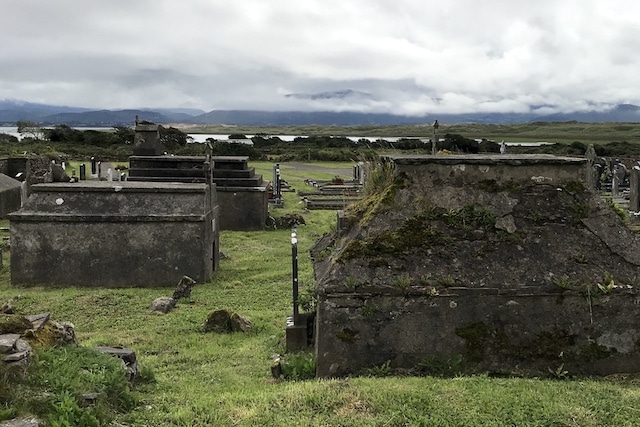
The start of the new year in 1801 brought bitter cold and heavy storms to southwest Ireland, battering the rural seaside village of Rossbeigh. Its residents, however, were soon rewarded with an unexpected bounty. Cargo from the recently shipwrecked Dictator began to wash ashore, spreading a surplus of cotton, coffee, sugar, and puncheons of rum along the rural coastline.
The Dictator began service in 1799 as a fully rigged sail vessel. And like many other ships departing England’s Merseyside docks at the time, it engaged in a particularly lucrative type of commerce: the transatlantic slave trade. For over 200 years, as many as 45 million Africans were shipped to European colonies in the New World, including large plantations in South America.
In the late autumn of 1800, the crew of the Dictator departed Guyana for its return leg back to Liverpool. Strong gale force winds caused the ship to veer terribly off course, eventually colliding with the rocky edges of the Dingle Peninsula. Only three of the 60 crew and passengers on board survived. The victims were most likely taken to Inch Graveyard, where scores of unmarked tombstones can still be seen scattered throughout the ancient burial ground.
5. Lusitania
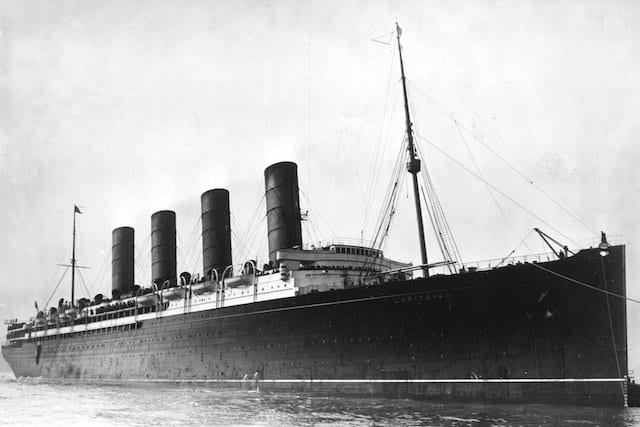
First launched in 1906, the Lusitania made headlines as the largest and fastest ship to cross the Atlantic. However, the luxury British ocean liner is best known for its demise off Ireland’s southern coast after being torpedoed by a German U-boat on May 7, 1915. The disaster, which claimed the lives of 1,195 people, including 128 US citizens, would catalyze America’s entry into World War One.
At the time of its sinking, the Lusitania (named for a former Roman province in modern-day Portugal), had been on its 202nd transatlantic crossing after departing New York six days earlier. A single torpedo from U-20 struck the ship’s starboard bow, triggering a massive explosion within the hull. The once-mighty ship sank in only 18 minutes near Kinsale, County Cork.
Almost immediately afterward, conspiracy theories began to circulate. Many historians have suggested the steamer had been deliberately lured into danger by British authorities, thus committing the U.S. into the war along with its vast resources.
Adding weight to the controversy, Winston Churchill penned a curious letter to Walter Runciman, president of Britain’s Board of Trade, a week before the Lusitania’s arrival. Churchill, who had been recently demoted as Lord of the Admiralty following the debacle at Gallipoli, wrote the following: “It is most important to attract neutral shipping to our shores in the hope especially of embroiling the United States with Germany . . . . For our part we want the traffic — the more the better; and if some of it gets into trouble, better still.”
4. RMS Tayleur
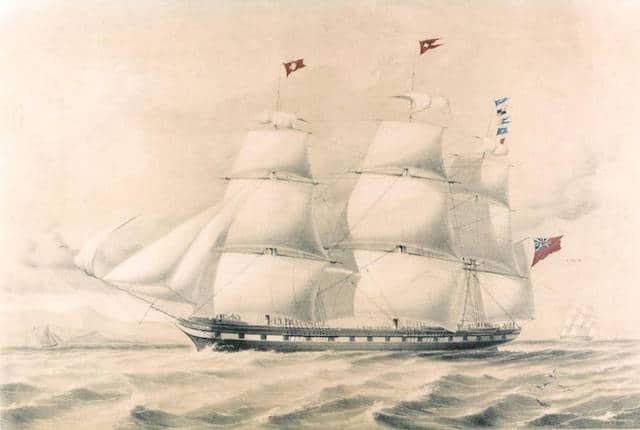
For centuries, the allure of gold has spurred treasure seekers to roam far and wide in hopes of striking it rich. Such was the case for several passengers aboard the RMS Tayleur, an iron clipper on its maiden voyage to Australia, where gold fever had reached epidemic proportions.
The rush to exploit the booming demand for travel ‘Down Under’ ultimately led to a spate of design flaws in the Tayleur, including a faulty compass, unbalanced masts, and a rudder too small for the large vessel. The addition of thick fog and high winds to the mix quickly became a recipe for disaster.
After departing Liverpool with 652 passengers and crew on January 19, 1854, Tayleur immediately drifted off course and headed due west. The doomed ship then slammed into Lambay Island in Dublin Bay, claiming the lives of 350 people.
3. SS Gairsoppa
The Kriegsmarine called it “Die Glückliche Zeit” (“The Happy Time”), a period during the early stages of WWII that saw German U-boats inflict heavy damage on Allied ships in the North Atlantic. One of those wrecks, the British merchant vessel, SS Gairsoppa, sunk approximately 300 miles southwest of Galway Bay after being torpedoed. The watery grave sat undisturbed for 70 years before being found in 2011. The discovery led to the largest known precious metal cargo ever recovered from the sea.
The steam-powered Gairsoppa had been tasked with transporting a large consignment of silver bullion from Calcutta to Liverpool, a harrowing journey covering 5,000 miles in rough seas. After making steady progress, the slow-moving freighter was forced to break away from its convoy to refuel. It didn’t take long for U-101 to pounce on the easy target.
Although all of the 86 crew members escaped the burning ship, they soon fell victim to the icy waters and machine-gun fire from the surfaced submarine. The lone survivor, 2nd Officer RH Ayers, spent the next 13 days drifting more than 300 miles before finally reaching Cornwall in England. For his heroism, Ayers was made an MBE.
Seven decades later, the Odyssey Marine Exploration located the wreck of the Gairsoppa at a depth of over 15,000 feet while conducting ROV (Remotely Operated Vehicle) operations. The deep-water specialists gradually recovered 2,792 silver bars from the ship, each weighing around 28 kilograms and stamped ‘HM Mint Bombay.’ Odyssey had been awarded a salvage contract by the UK government, allowing the company to retain 80% of the net value of the .999 high-purity ingots, estimated at $210 million.
2. Santa María de la Rosa
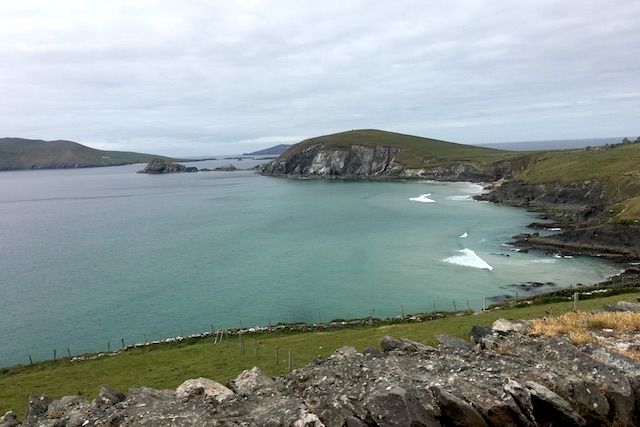
By the latter stages of the 16th century, the Spanish Empire had reached its zenith. King Phillip II, having claimed large swaths of North and South America, and most of the Caribbean, looked to expand his realm by invading England. Huge mistake. The blunder would result in a crushing defeat that saw two dozen Spanish ships wrecked on the Irish coast, a heap of carnage that included the Santa María de la Rosa.
In August 1588, the Spanish Armada, a fleet consisting of some 150 ships, set sail for Flanders (Spanish Netherlands). The Spaniards intended to rendezvous with an army led by the Duke of Parma and then ferry them across the English Channel. But, alas, like many overly ambitious campaigns throughout military history, let’s just say things didn’t exactly work out as planned.
Following a decisive victory by the British Royal Navy at the Battle of Gravelines, the decimated Armada attempted to limp back to Spain by navigating around Ireland. However, the ill-equipped Spanish boats proved no match for the volatile North Atlantic winds.
The Santa Maria de la Rosa, which had previously served as a light merchant ship, quickly sank after hitting a large reef near the Blasket Islands along the westernmost reaches of Ireland. Among its crew of 64 sailors and 233 soldiers, only one man survived.
1. Lady Nelson
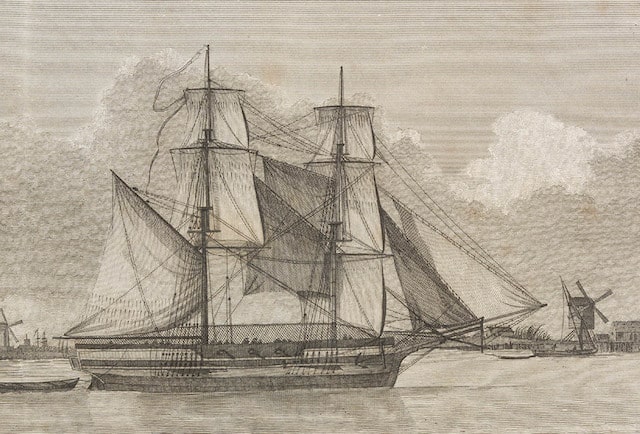
Sex. Jealousy. Booze. This shipwreck had it all. A notice in the Freeman’s Journal from October 1809 reported: “We are concerned to hear that the ship Lady Nelson, Bernard Wade master, from Oporto to Liverpool, about 11 o’clock on the night of the 14th, struck on a rock between the Skelligs and the mainland, and instantly went to pieces; and melancholy to add, the captain and crew, consisting of 22 men and also three women, a child and a gentleman passenger were lost, two of the crew only excepted.”
But there’s more to this story. Barrels more.
Before tragedy struck, Lady Nelson had experienced a colorful and well-traveled history. The 201 ton, full rigger (a sailing ship with three or more masts – all of them square-rigged) plied its trade out of numerous ports, including London, Dublin, Madeira, and Brazil. The latter two suggest it engaged in the smuggling of alcohol and the slave trade.
Reports listed in Lloyds Register reveal that the heavily armed vessel had been captured as a prize. It later operated as a privateer — a form of legal piracy in which governments commissioned ships to attack and seize enemy boats. So with that rich backstory, the not-so-fair Lady left Portugal on what would be its final voyage with a cargo consisting primarily of 450 pipes of port wine (pipes = elongated casks designed to suit transportation), totaling more than 40,000 gallons of the celebrated beverage.
Along the way, the ship encountered foul weather near the Skellig Islands, a remote area of southwestern Ireland, featuring a 6th-century monastery which later served as a filming location for three Star Wars films. According to an account told by the two survivors, Captain Wade ignored numerous warnings about sailing near the dangerous rocks. Instead, he wallowed a drunken stupor after learning that his wife (allegedly) was having an affair with the ship’s mate.
Finally, to wrap up this delightfully juicy yet tragic tale, 25 people eventually perished in the shipwreck. As for the prized cargo, only 12 pipes were recovered by the authorities, leaving the remaining balance of top-shelf hootch for the locals to enjoy.